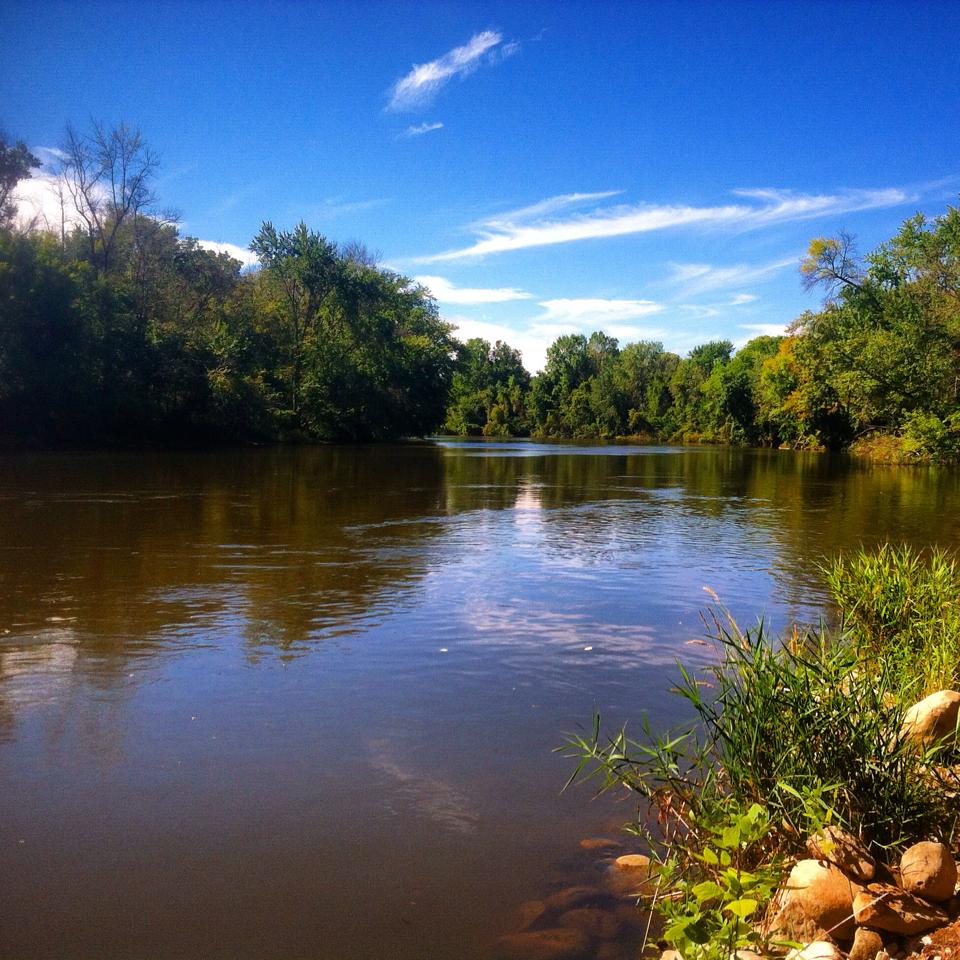Lake Sturgeon, also known as “nmé” in Pottawatomi, were once plentiful in Michigan. Stories are told of rivers so full of sturgeon that a person could walk across water on the backs of the fish without wetting their feet. Sadly, that is not the case today. Sturgeon are listed as a threatened species in Michigan and are either threatened or endangered in 19 of the 20 states within their original range in the United States. Lake Sturgeon’s appearance on the ‘threatened’ species list is not recent and is attributed to overharvesting, habitat destruction, pollution, dam construction and their unusual biology including late maturity and breeding habits.
However, all the news is not grim. The Match-e-be-nash-she-wish Band of Pottawatomi Indians, otherwise known as the Gun Lake Tribe, is partnering with the U.S. Fish and Wildlife Service and the Michigan Department of Natural Resources to restore the Kalamazoo River’s lake sturgeon population. The Gun Lake Tribe previously restored spawning habitat near the Calkins Dam in 2016.
Sturgeon (Acipenser fulvescens) are the largest freshwater fish native to our area and make up an important biological component in the Great Lakes fish community. Lake Sturgeon have a rich history with the Gun Lake Tribe and other Anishinaabe people. Lines of lineage – or clans – are named for native birds, animals and fish and are honored for the characteristics of the species. Nmé, or Sturgeon Clan, is referred to as the Ogema or Chief Clan of the fish pantheon, with the Turtle also holding the title of Chief. The Water (or Fish) Clan people are considered the spiritual advisors and mediators of the Tribe; they are considered the philosophers and spiritualists. Like the fish themselves, Sturgeon Clan members have the longest lifespan amongst all the clans.
The Gun Lake Tribe is working toward protecting and increasing the lake sturgeon population in the Kalamazoo River. “The rehabilitation of lake sturgeon is a reflection of the Tribe’s present-day progression as a community and a Tribal Government,” said Tribal spokesman, James Nye.
Survey and restoration efforts are led by Liz Binoniemi-Smith, Environmental Director, and Jason Lorenz, Biologist. The Gun Lake Tribe conducts adult surveys, larval drift surveys and egg mat collections to assist lake sturgeon with reproduction. Collected eggs and juveniles are brought to a streamside rearing facility where they are raised to a larger size that increases their change of survival. Adult and juvenile lake sturgeon are tagged with a passive integrated transponder (PIT) tag to track their movement once released. In the fall, a lake sturgeon release celebration is held to celebrate the release of wild lake sturgeon back into the Kalamazoo River.
Critical objectives of the Nmé project include:
- Restoring habitat in the Kalamazoo River suitable for lake sturgeon spawning
- Conduct egg deposition and larval drift surveys to assess reproductive success associated with current and restored spawning areas
- Increase public knowledge of Nmé, Tribal culture and the restoration efforts through public and Tribal educational outreach efforts
For more information about the project, visit the Gun Lake Tribe website and this WMUK article and interview.

